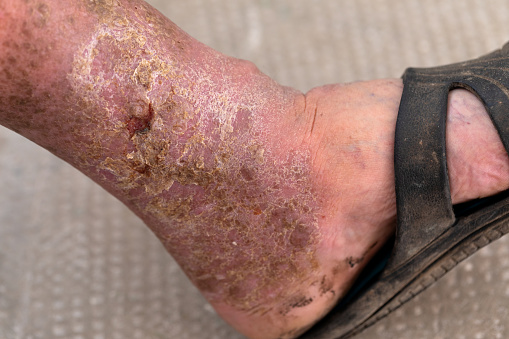Diabetic foot is a serious complication of diabetes, which may require amputation of the foot, if not managed appropriately.
The best way to prevent diabetic foot ulcers and thereby diabetic foot (as well as other complications of diabetes) is proper management of diabetes and blood sugar control by medications (insulin and oral hypoglycemic drugs), diet and exercise, and regular monitoring of the disease. Proper management of diabetes is possible if the prescribed medication regimen adheres strictly.
To prevent foot ulcers in diabetes proper foot care is required. Proper foot care can ensure prompt medical care when it is required to prevent diabetic foot.
The following tips can help in preventing foot ulcers in a diabetes patient:
Daily foot inspection: inspect your feet daily if there is any blister, cut, crack, redness, swelling, soreness, or tenderness. If you cannot inspect all parts of your foot, ask someone to inspect for you or use a hand mirror. Inspect in between toes carefully.
Trim toenails carefully: trim your toenails regularly and do not allow them to grow. If you cannot do it yourself, take help from some caregiver.
Wash your feet daily: wash your feet with lukewarm water daily before going to bed. Rub them dry with a piece of soft cloth/towel. Use powder to keep your feet dry or use lotion to keep your feet soft.
Do not go barefoot: do not go barefoot. Always wear shoes while going outside or working outdoor or even on your lawn. This helps in preventing injury to the feet, which is difficult to manage in diabetes patients.
Do not smoke: smoking impairs circulation and delays wound healing. Smoking reduces the amount of oxygen in the blood. Quit smoking immediately if you are a smoker.
Use shoes that fit properly: buy shoes that fit properly and are comfortable to wear. Do not wear high heels and uncomfortable shoes. Always wear socks along with shoes.
Keep socks clean and dry: use clean and dry socks only. Use socks that can absorb sweat/moisture, such as cotton or special fibers. Do not use nylon socks, as they cannot absorb sweat properly. Use properly fitting socks and avoid using socks with tight elastic bands, which can reduce blood circulation to the feet.
Callus or other foot lesions: it is better to get callus or other foot lesions removed/treated by trained persons and not by yourself.
Get regular foot checkups: get your feet checked up by your podiatrist regularly. Your podiatrist can detect early signs of nerve damage, circulation problems, or other problems of the foot.
Do not ignore minor injuries: take all types of injuries seriously. Even minor injuries should be treated appropriately and preferably by your doctor.
By following the above-mentioned tips, it is possible to prevent foot problems in diabetes and live a healthy life.

Comments
Post a Comment